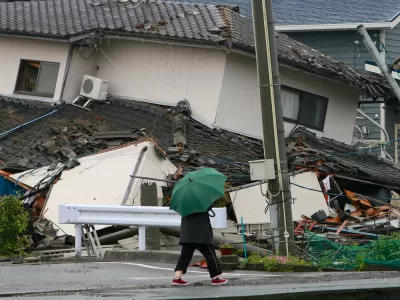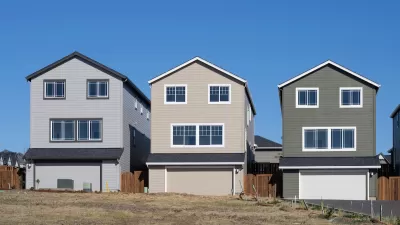Research shows that low-income communities suffer most and take the longest to recover from disasters, which can often wipe out affordable housing stock and displace vulnerable households.

In a piece on The Conversation, Shannon Van Zandt outlines how natural disasters can contribute to the loss of affordable housing, placing the most vulnerable community members at risk for displacement and extra hardship. "Research has shown consistently that lower-income households are not only more likely to suffer damage in a natural disaster, but they are more likely to take much longer – two to three times longer – to recover."
Meanwhile, displacement remains a real danger, says Van Zandt. "Research suggests that affordable housing will almost always be replaced by more expensive housing targeted to a wealthier demographic. And for low-income residents who rent and lose their homes to disasters, there is little chance that they will be able to return to their original development. Little is known about where they end up."
The article describes examples of communities that took proactive steps to protect vulnerable residents after disasters. "La Grange, Texas, which flooded during Hurricane Harvey in 2017, is experimenting with community land trusts. These involve cooperative ownership of land coupled with individual ownership of units." Elsewhere, "Boulder County relaxed its rental rules to help displaced residents find temporary homes after the fire."
Van Zandt notes that resilience planning and disaster recovery are increasingly important: "Nearly every community in the United States is increasingly vulnerable to some kind of natural disaster due to climate change. A Washington Post analysis of federal disaster declarations found that 40% of Americans lived in counties that were hit with extreme climate-related weather in 2021 alone."

Maui's Vacation Rental Debate Turns Ugly
Verbal attacks, misinformation campaigns and fistfights plague a high-stakes debate to convert thousands of vacation rentals into long-term housing.

Planetizen Federal Action Tracker
A weekly monitor of how Trump’s orders and actions are impacting planners and planning in America.

In Urban Planning, AI Prompting Could be the New Design Thinking
Creativity has long been key to great urban design. What if we see AI as our new creative partner?

Cal Fire Chatbot Fails to Answer Basic Questions
An AI chatbot designed to provide information about wildfires can’t answer questions about evacuation orders, among other problems.

What Happens if Trump Kills Section 8?
The Trump admin aims to slash federal rental aid by nearly half and shift distribution to states. Experts warn this could spike homelessness and destabilize communities nationwide.

Sean Duffy Targets Rainbow Crosswalks in Road Safety Efforts
Despite evidence that colorful crosswalks actually improve intersection safety — and the lack of almost any crosswalks at all on the nation’s most dangerous arterial roads — U.S. Transportation Secretary Duffy is calling on states to remove them.
Urban Design for Planners 1: Software Tools
This six-course series explores essential urban design concepts using open source software and equips planners with the tools they need to participate fully in the urban design process.
Planning for Universal Design
Learn the tools for implementing Universal Design in planning regulations.
Appalachian Highlands Housing Partners
Gallatin County Department of Planning & Community Development
Heyer Gruel & Associates PA
Mpact (founded as Rail~Volution)
City of Camden Redevelopment Agency
City of Astoria
City of Portland
City of Laramie





























